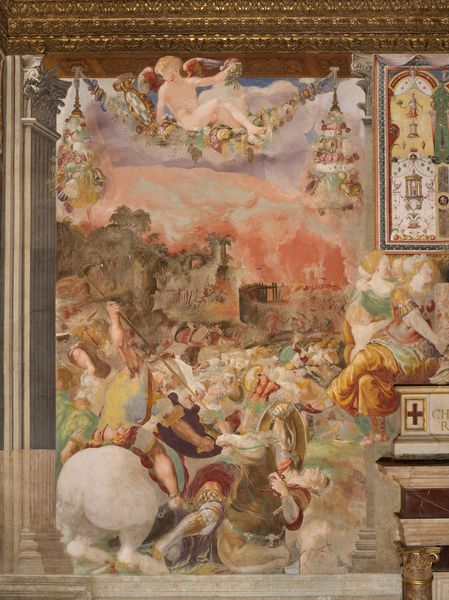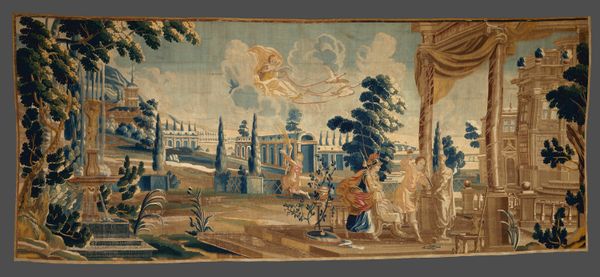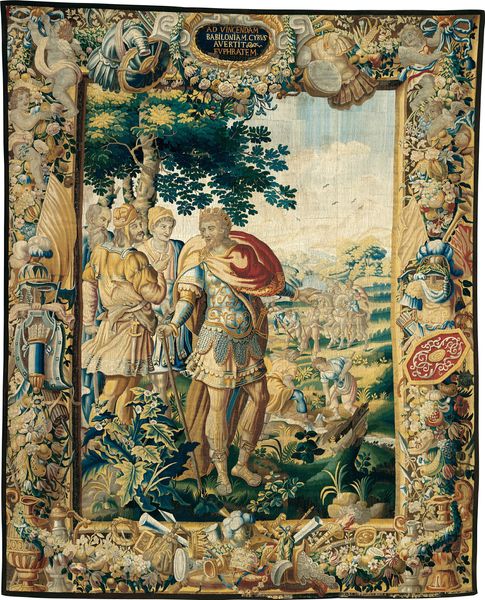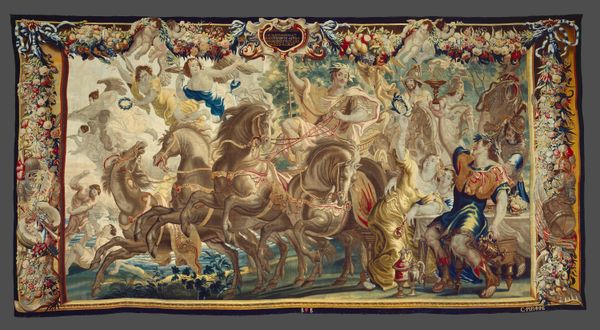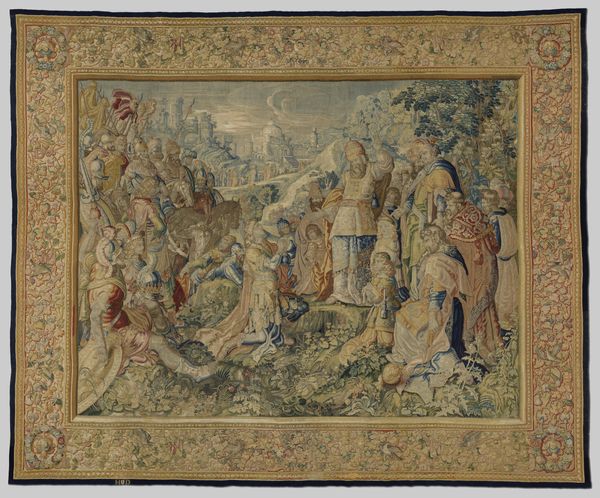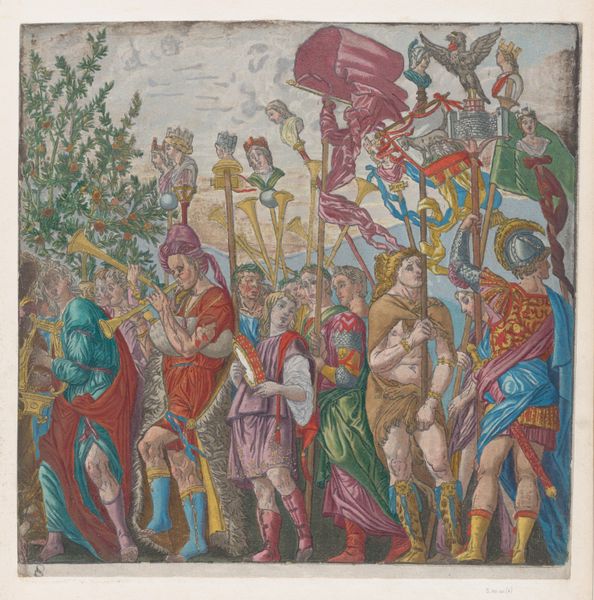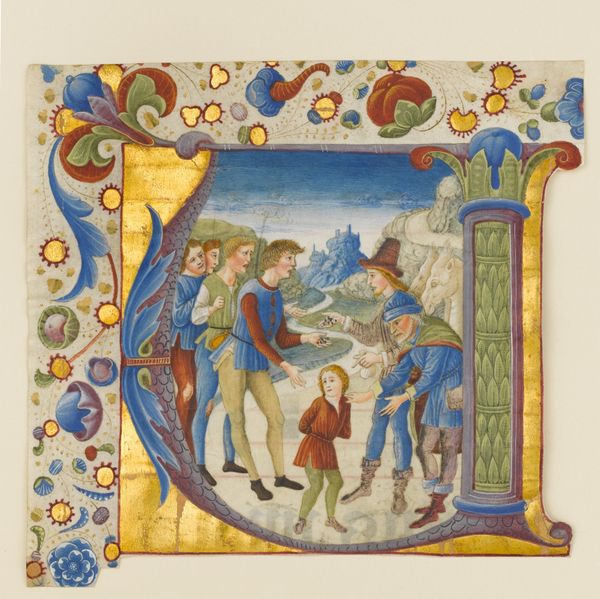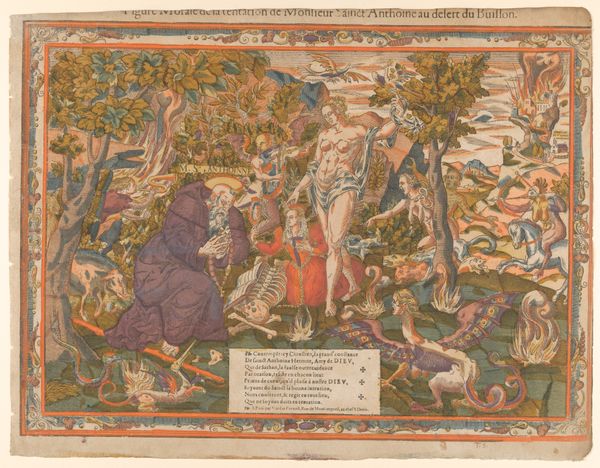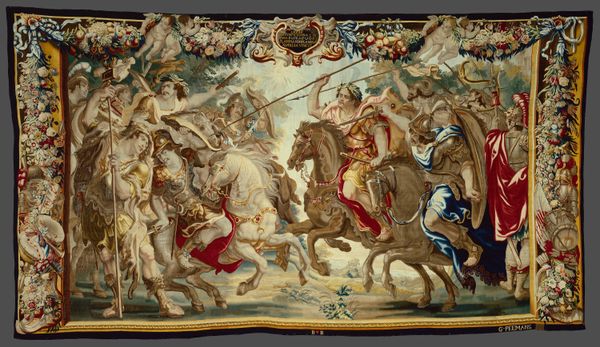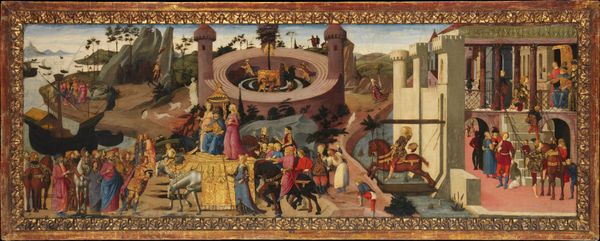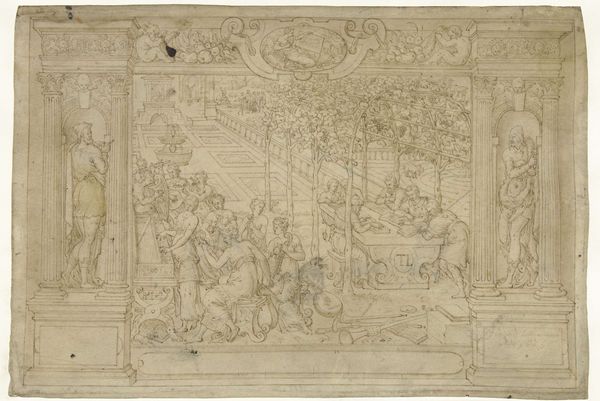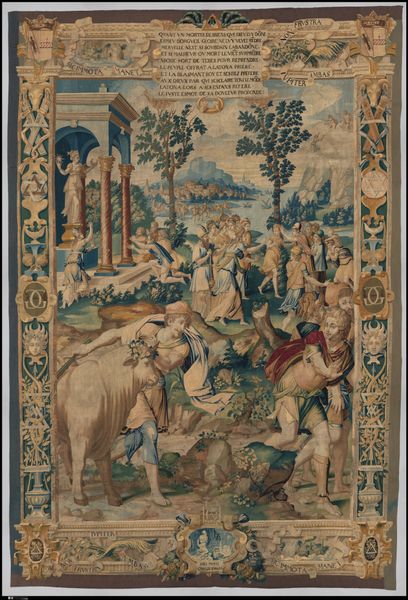
Ratgebs Szenen aus der Genesis im Karmeliterkloster in Frankfurt am Main 1514
0:00
0:00
drawing, painting, watercolor, ink, architecture
#
drawing
#
medieval
#
water colours
#
narrative-art
#
painting
#
figuration
#
11_renaissance
#
handmade artwork painting
#
oil painting
#
watercolor
#
ink
#
german
#
13_16th-century
#
history-painting
#
watercolor
#
architecture
Copyright: Public Domain
Curator: Standing before us is Ratgebs's work "Scenes from Genesis in the Carmelite Monastery in Frankfurt am Main", dating back to 1514. It's currently held in the Städel Museum, a German piece, done in watercolor and ink, among other things. Editor: It's chaotic, isn’t it? Figures scattered all over, seemingly disparate vignettes crammed together. I’m immediately struck by the materiality though – that wash of watercolor, how the paper takes the ink, and that handcrafted feel of it. What kind of painting is this exactly? Curator: The image illustrates stories from the Book of Genesis, set within what appears to be the arches of the Carmelite Monastery. Ratgebs captures multiple moments in this one composition, including God's light. These narratives were essential to moral and spiritual instruction. This piece embodies the humanist and religious sentiments prevalent in early 16th-century Frankfurt. Editor: Absolutely! But look closer; those pigments aren't just about depicting a scene; they’re about communicating a complex visual experience. It must have been meticulously worked, from sourcing pigments to layering the washes to getting the desired tones. This reveals so much about workshop practices of the period and the consumption of art for religious didacticism, perhaps commissioned to influence the views of the Carmelite monks in Frankfurt. Curator: Exactly! Its craftsmanship reflects a unique blend of medieval traditions and early Renaissance artistic expression. And it served as an ideological function— it’s not just depicting stories but reinforcing power structures and religious doctrine within that monastery setting. Editor: I'm left wondering, who had access to artworks like this? What kind of skill or apprenticeship went into crafting them? Considering those pointed gothic arches, what’s being shown and how does that contrast with this architectural setting in terms of labour, belief and symbolism? Curator: Seeing how you focused on those elements adds another level of understanding to the piece’s intended message. Editor: And considering those religious didactic undercurrents you noted really makes you examine what it represents and, importantly, for whom.
Comments
No comments
Be the first to comment and join the conversation on the ultimate creative platform.
